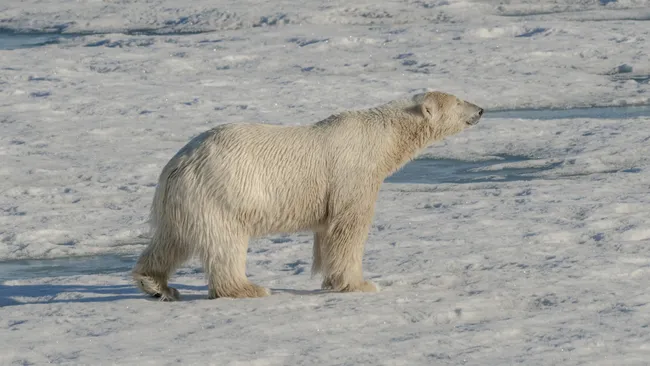At least two populations of polar bears in the high Arctic are developing paw injuries, possibly because of shifting sea ice conditions in a warming environment, according to a new study. Such injuries have not been reported in these areas previously, the study’s authors write.
What the study says
- Between 2012 and 2022, researchers studied two populations of polar bears (Ursus maritimus) in the high Arctic. They tranquilized several bears to record their age, sex, reproductive status and health.
- During the health checkups, the scientists observed various injuries on the bears’ footpads, including cuts, hair loss, skin ulcerations and ice buildup. In two severe cases, the adult bears had thick ice blocks, 30 centimeters (1 foot) in diameter, stuck to their paw pads and surrounding fur, causing deep, bleeding cuts. “The two most-affected bears couldn’t run — they couldn’t even walk very easily,” lead author Kristin Laidre, a scientist at the University of Washington, U.S., said in a statement. “[T]he chunks of ice weren’t just caught up in the hair. They were sealed to the skin, and when you palpated the feet it was apparent that the bears were in pain.”
- The researchers write that such injuries “have not been observed during previous research in these areas or reported in the scientific literature.” The scientists also interviewed 22 Indigenous subsistence hunters from the region who said they, too, had not observed such injuries until recently.
- The study’s authors speculate that the warming Arctic could be contributing to the bears’ paw injuries. Increased rain-on-snow events, when rain falls on existing snow, causes snow to melt more quickly. Wet snow could be clumping on the bears’ paws, then refreezing into solid balls of ice as temperatures fall. Warming is also causing the surface snow to melt, then refreeze into hard crust when the temperature drops again. Heavy polar bears, while walking, might be breaking through the crust and slicing their paws on the sharp edges. Local hunters reported similar conditions lead to paw injuries in their sled dogs.
Why it matters
The researchers say they’re unsure how the injuries will affect polar bear populations, but they speculate the injuries could reduce the bears’ “ability to hunt and travel successfully.”
Recent research suggests the Arctic is warming nearly four times faster than the global average. Winter warming and rain-on-snow events have also been increasing as a result, the authors write. Continued warming will likely create “challenging surface conditions for polar bears to travel on” and make the polar bears, which are considered vulnerable to extinction, more prone to injuries, they add.

This article by Shreya Dasgupta was first published by Mongabay.com on 25 October 2024. Lead image of rear paws of a polar bear with large chunks of ice frozen onto its feet. Image courtesy of Kristin Laidre/University of Washington.
What you can do
Help to save wildlife by donating as little as $1 – It only takes a minute.







Leave a Reply